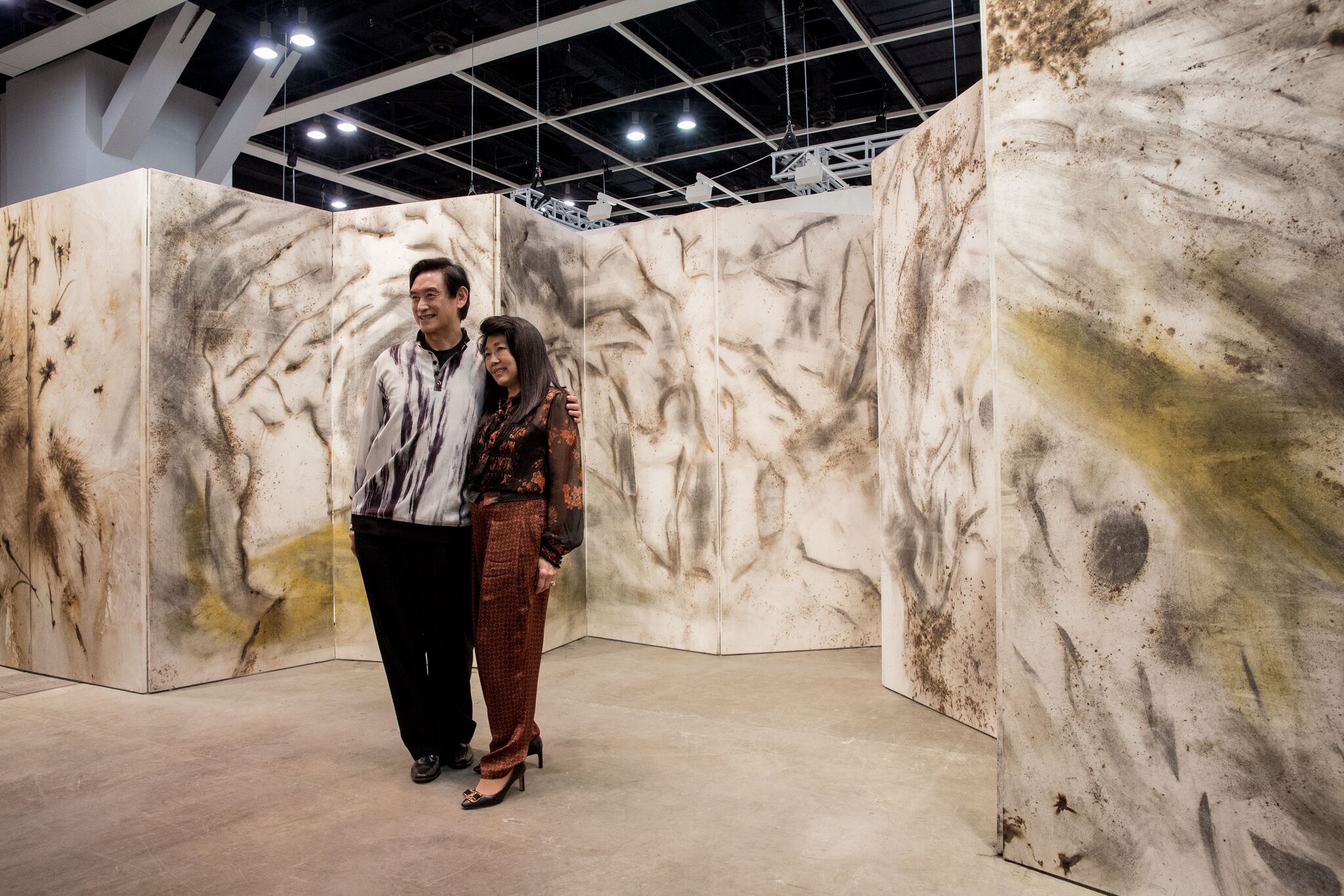
The fifth edition of Art Basel in Hong Kong got off to a great start on March 21, with dealers reporting a flurry of sales, cementing the city’s status as an important marketplace with growing significance.
“Hong Kong is the market of the future,” Swiss collector of Chinese art Uli Sigg told artnet News at the fair. “But also a scene that is rapidly developing. The artists feel at home here and evidently the galleries do too. The legal framework probably has something to do with it,” he continued. “Easy import, easy export, and the fair is getting stronger every year.”
New York art adviser Wendy Cromwell shared a different perspective, “A fair like Hong Kong is a great opportunity to buy things,” she told artnet News over the phone. “The galleries are trying to cultivate a market in Asia for certain artists who maybe haven’t quite caught on yet, or maybe the appetite isn’t fully there yet for this work. For me, this is an opportunity, because sometimes the works go over there but don’t sell. And if my clients are interested then I’m able to be opportunistic and swoop in.”
Mark Bradford Water in the Ear Puts Guards at the Gate (2017). Courtesy the artist and Hauser & Wirth.
However, according to the American Berlin-based dealer Javier Peres, this is changing. “People used to bring stuff that they thought the Asian market would like, but that’s changing,” he said. “I think this year galleries have brought more Western art, which reflects the globalization of the market.”
David Zwirner reported some quick business, selling two of the three $1.5 million works that Belgian painter Luc Tuymans made especially for the fair within the first hour. The gallery also sold a medium-sized work from Yayoi Kusama’s “Infinity Nets” series for $450,000, a small Michaël Borremans canvas for $420,000, and a small bronze Sherrie Levine sculpture for $120,000. Gallery partner Julia Joern was visibly satisfied with the early sales and expressed her optimism for the days ahead.
Luc Tuymans at David Zwirner. Courtesy Art Basel.
Hauser & Wirth focused their booth around the gallery’s Venice Biennale participants, Phyllida Barlow, Mark Bradford, and Philip Guston. A 1964 Guston was purchased for seven figures, as did a large Bradford. Sculptures by Barlow were sold to an Asian private collection and a Chinese museum for $69,000 and $173,000 respectively. The gallery also sold a work by Rashid Johnson for $175,000 to a Chinese collector. When asked which work he would highlight, dealer Iwan Wirth wryly told artnet News, “If there was a fire and I could only save one work, I’d stay inside and burn in the house with all of them.”
Nearby, German gallery Sprüth Magers sold a Thomas Ruff photo for $110,000, a Sterling Ruby sculpture for $45,000, a Pamela Rosenkranz painting for $60,000 and five George Condo drawings for between $20,000 and $60,000 each.
Meanwhile a collector at Massimo de Carlo’s booth was overheard telling the Italian dealer “We want to photograph our paintings, so we don’t forget we bought them, if that’s okay?” The gallerist didn’t stop him.
Sprüth Magers. Courtesy Art Basel.
Elsewhere, Thaddaeus Ropac reported the sale of a Tony Cragg sculpture for $700,000, a Georg Baselitz canvas for $390,000, a David Salle painting for $300,000 and a Gilbert & George for $156,000.
London outfit White Cube said they sold a large nearly 20-foot Theaster Gates floor panel work for $700,000 and a 10-foot Baselitz for $622,000.
Long March Space, Beijing. Courtesy Art Basel.
Beijing-based Long March Space sold a Wu Shanzhuan for $157,000 and a collaboration between Wu and Inga Svala Thorsdottir for $88,000. They also reported the sale of a Wang Jianwei for $88,000.
Fellow Beijing and Lucerne-based gallery Urs Meile said they sold a Shao Fan ink on rice paper work for $170,000.
Korean dealers Kukje Gallery/Tina Kim Gallery also shifted nine works, with highlights that included a recent Lee Ufan painting for $250,000–300,000, a Ugo Rondinone painting for $100,000–150,000, a Kwon Young-Woo gouache for $230,000–275,000, and a Kim Yong-Ik canvas for $180,000–230,000.
Londoners Waddington Custot sold a Chu Teh-Chun for $1.4 million and a Fabienne Verdier for $260,000.
And Mitchell-Innes & Nash sold two Eddie Martinez works for $50,000 each, while Berlin-based Johann König reported the sale of a in-demand German artist Jorinde Voigt for $155,000 and an Alicja Kwade work for $70,000.
White Cube. Courtesy Art Basel.
With a high percentage of works going to Asian public and private collections, the strong and fast sales reflect the growing importance of the Asian marketplace. China’s market alone makes up 20 percent of the global art market (including Hong Kong) according to Art Basel’s newly-released art market report, and without the political or economic volatility of Europe or the US, Asian buyers are perhaps more confident about participating in the market at this time.